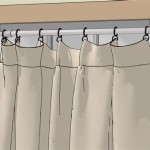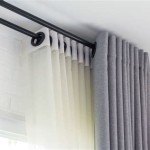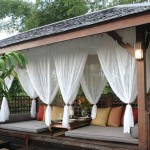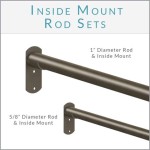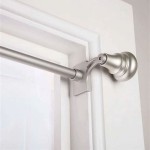How To Know If Curtain Bangs Will Suit You
Curtain bangs have surged in popularity as a versatile and flattering hairstyle, offering a soft, face-framing effect. However, determining whether this style will complement an individual's features and lifestyle requires careful consideration of several factors. This article aims to provide an objective assessment of the key elements that contribute to the suitability of curtain bangs for different hair types, face shapes, and personal preferences.
Analyzing Face Shape
Face shape is a primary determinant in assessing the suitability of any hairstyle, including curtain bangs. Different styles of curtain bangs can either enhance or detract from the natural contours of the face. The following outlines considerations for different facial shapes:
Round Faces: Individuals with round faces often seek hairstyles that add definition and create the illusion of length. Curtain bangs can be highly effective in achieving this, provided they are styled correctly. The key is to ensure the bangs are not too wide or blunt, as this can accentuate the roundness. Opting for longer, wispy curtain bangs that frame the cheekbones can create angles and slim the face. Avoid shorter, fuller bangs that sit heavily on the forehead, as these tend to emphasize the fullness of the face.
Square Faces: Square faces are characterized by a strong jawline. Curtain bangs can soften these features by providing a softer, more rounded frame around the face. The ideal style for a square face involves bangs that are slightly longer on the sides and taper towards the center, creating a gentle curve that breaks up the angularity of the jaw. Soft, layered curtain bangs that fall just below the cheekbones are particularly flattering, as they draw attention to the eyes and help balance the strong jawline. Avoid blunt, straight-across bangs, as these can further emphasize the squareness of the face.
Oval Faces: Oval faces are considered the most versatile and can typically accommodate a wide range of hairstyles. Curtain bangs are generally very flattering on oval faces, as they enhance the natural symmetry and balance of the features. Individuals with oval faces have the freedom to experiment with different lengths, thicknesses, and styles of curtain bangs. Whether opting for shorter, more textured bangs or longer, more flowing ones, the key is to maintain a sense of proportion and ensure the bangs complement the overall hairstyle.
Heart-Shaped Faces: Heart-shaped faces are characterized by a wider forehead and a narrower chin. The goal when styling hair for a heart-shaped face is to create balance and add width to the lower portion of the face. Curtain bangs can be highly effective in achieving this, particularly when styled to be slightly wider at the cheekbones and taper towards the center. This creates the illusion of fullness in the lower face, balancing the wider forehead. Avoid bangs that are too short or too heavy, as these can accentuate the width of the forehead and make the chin appear even narrower.
Long Faces: Long or rectangular faces benefit from hairstyles that add width and create the illusion of a shorter face. Curtain bangs can be used strategically to achieve this effect. The ideal style for a long face involves bangs that are slightly fuller and extend to the cheekbones, creating a horizontal line that visually shortens the face. Avoid bangs that are too long or too wispy, as these can further elongate the face. Opting for a slightly textured style can also add volume and dimension, further enhancing the overall balance.
Assessing Hair Texture and Type
The texture and type of hair significantly influence how curtain bangs will fall and behave. Different hair types require different styling approaches to achieve the desired look. The following provides guidelines based on common hair textures:
Fine Hair: Fine hair can often lack volume and body, making it challenging to maintain the shape and style of curtain bangs. To ensure the bangs don't appear limp or sparse, it's crucial to create texture and volume at the roots. Using volumizing products, such as mousse or texturizing spray, can help add lift and prevent the bangs from falling flat. Layering the bangs slightly can also create the illusion of more thickness. For individuals with fine hair, it’s generally advisable to avoid heavy or overly thick bangs, as these can weigh down the hair and make it appear even thinner.
Thick Hair: Thick hair is generally well-suited for curtain bangs, as it naturally provides volume and body. However, managing the thickness and preventing the bangs from becoming too overwhelming is crucial. Thinning out the bangs slightly can help create a softer, more manageable look. Layering the bangs is also essential to ensure they blend seamlessly with the rest of the hair. Individuals with thick hair should consider the overall weight of their hair and avoid styles that are too heavy, as this can create an unbalanced appearance. Regular trims are essential to maintain the shape and prevent the bangs from becoming too long or unruly.
Wavy Hair: Wavy hair presents a unique challenge when styling curtain bangs, as the natural texture can cause the bangs to curl or frizz unpredictably. To ensure the bangs maintain their shape and style, it's crucial to use products that control frizz and enhance the natural wave pattern. Applying a curl-defining cream or serum can help define the waves and prevent the bangs from becoming too unruly. Air-drying the bangs or using a diffuser attachment on a hairdryer can also help maintain the natural texture without creating excessive frizz. Individuals with wavy hair should avoid over-styling the bangs, as this can disrupt the natural wave pattern and create an unnatural look.
Curly Hair: Styling curtain bangs on curly hair requires a slightly different approach, as the natural curl pattern can significantly influence how the bangs fall and behave. It's essential to work with the natural curl pattern and choose a style that complements the overall texture. Cutting the bangs while the hair is dry can help ensure the length and shape are accurate, as curly hair tends to shrink when it dries. Hydrating products, such as leave-in conditioners and curl creams, can help define the curls and prevent frizz. Avoid over-straightening the bangs, as this can create an unnatural look and disrupt the overall balance of the hairstyle. Embracing the natural curl pattern is key to achieving a flattering and low-maintenance style.
Straight Hair: Straight hair is generally the easiest to style into curtain bangs, as it naturally falls smoothly and maintains its shape. However, adding texture and volume is crucial to prevent the bangs from appearing limp or lifeless. Using texturizing sprays or mousse can help create lift at the roots and add dimension to the bangs. Layering the bangs slightly can also enhance the overall shape and prevent them from looking too blunt or heavy. Regular trims are essential to maintain the length and prevent the bangs from becoming too long or unruly.
Considering Lifestyle and Maintenance
Beyond face shape and hair type, an individual's lifestyle and willingness to commit to maintenance are important factors in determining the suitability of curtain bangs. The time and effort required to style and maintain curtain bangs should align with an individual's daily routine and personal preferences. Considerations include:
Styling Time: Curtain bangs typically require some degree of daily styling to maintain their shape and appearance. This may involve blow-drying, using a round brush, or applying styling products. Individuals with busy schedules or those who prefer low-maintenance hairstyles should consider the time commitment required before opting for curtain bangs. Those who are willing to dedicate a few minutes each day to styling their bangs will likely find the style more manageable and enjoyable. Alternatively, exploring low-maintenance styling techniques, such as air-drying with the aid of texturizing products, can help reduce the daily styling time.
Maintenance Requirements: Curtain bangs require regular trims to maintain their shape and length. The frequency of trims will depend on the rate of hair growth and the desired style, but generally, trims are recommended every 2-4 weeks. Neglecting regular trims can result in the bangs becoming too long or unruly, which can detract from their overall appearance. In addition to trims, occasional deep conditioning treatments may be necessary to maintain the health and hydration of the hair, particularly for those with dry or damaged hair. Individuals should factor in the cost and time associated with these maintenance requirements when deciding whether curtain bangs are a suitable option.
Activity Level: An individual's activity level can also influence the suitability of curtain bangs. Those who engage in frequent physical activity or spend a lot of time outdoors may find that curtain bangs require more frequent styling and maintenance to keep them looking their best. Sweat and humidity can cause the bangs to become limp or frizzy, requiring touch-ups throughout the day. Individuals with active lifestyles may consider styling their bangs in a way that allows them to be easily swept aside or pinned back during physical activity. Alternatively, opting for a longer style of curtain bangs that can be easily incorporated into a ponytail or bun can provide greater flexibility and convenience.
Personal Style: Ultimately, the suitability of curtain bangs depends on an individual's personal style and preferences. The style should complement the overall aesthetic and make the individual feel confident and comfortable. If an individual is drawn to the soft, face-framing effect of curtain bangs and is willing to commit to the necessary styling and maintenance, they are likely to find the style a rewarding addition to their overall look. Experimenting with different styles and consulting with a professional hairstylist can help individuals find the perfect variation of curtain bangs that suits their individual features and preferences.

Bangs Quiz Find The Perfect For My Face Shape

Bangs Can Make You Prettier Here S Which Ones To Get

Curtain Bangs Filter How Would I Look With Perfect

Who Should Get Curtain Bangs

How To Pick Curtain Bangs Suit Your Face Shape And Hair Type Metro News

Curtain Bangs Tutorial A Step By Guide

Bangs Quiz Find The Perfect For My Face Shape

Best Hair Bangs Or Not According To Your Face Shape

Curtain Bangs The Best Styles For Your Face Shape Hair Type Haiirology

Bangs Quiz Find The Perfect For My Face Shape

